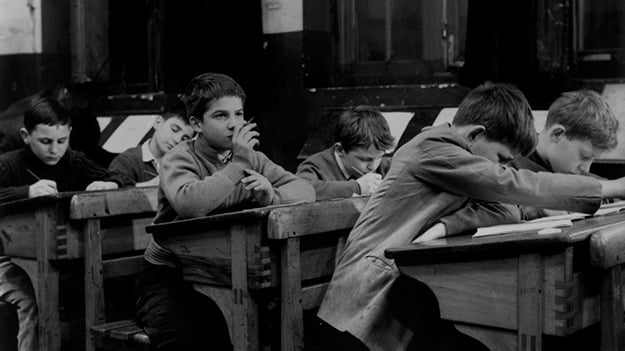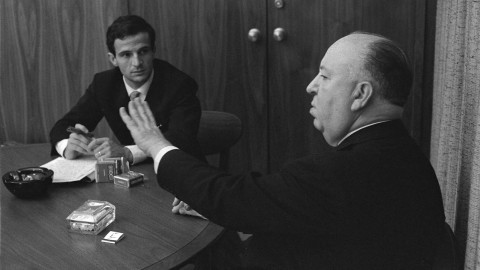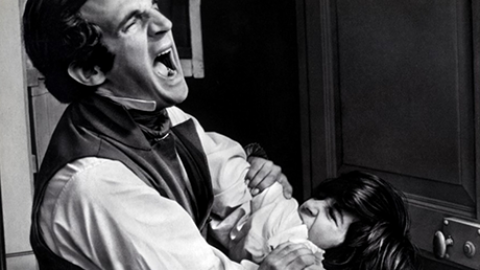What I Saw at the Pictures
Novelist Russell Banks will introduce a special screening of Truffaut’s The 400 Blows on Saturday, March 2, as part of Rendezvous with French Cinema at the Film Society of Lincoln Center. He will also participate in a free talk with Paul Schrader on Friday, March 1.

Once a week, usually on a Saturday afternoon, in my small-town New England childhood in the 1940s and early 1950s, we went to “the pictures” or “the picture show.” As in The Last Picture Show. We didn’t go to the cinema or to a film or even to the movies. This three- or four-hour afternoon interlude in the dark—with cowboys and Indians, Tarzan and Jane, Abbott and Costello, the Three Stooges, Tom & Jerry and Disney cartoons, triumphant World War II movies, and the occasional Technicolor romance or historical costume drama—was our reward for having suffered all week under the authoritarian yoke of the adults who ran our country and our schools, churches, and families. We were postwar and McCarthy-era American boys and girls, undiscriminating, easy to thrill and amuse, and escapist. Though we did not know it, our vision of the real world (whatever that was) was being subliminally shaped by what we thought was only a short-lived Saturday afternoon escape from that real world. We thought it was idle diversion; it was, in fact, programmed pro-American propaganda.
So by the late 1950s and early 1960s, as we entered adult life, we were suffering from a weird kind of cognitive dissonance. We had been told and shown by the moving pictures that, in the real world, right and wrong were absolutes and easy to distinguish from one another. We were told and shown that adult men and women had clearly defined roles, responsibilities, and relations, and any violation or confusion about those matters would be severely and correctly punished. We were told and shown by those moving images that America, even when it fell short of greatness (The Grapes of Wrath and All the King’s Men and Citizen Kane), was still the greatest nation that ever existed on earth.
Yet it was becoming increasingly clear to us that in the real world distinguishing right from wrong was difficult and sometimes impossible; that good men and women often behaved badly to one another and especially to children and the powerless; that cruel, unjust, and exploitative acts usually went unpunished; that certainty of any kind was mostly inaccessible, and moral ambiguity, emotional conflict, and political oppression were everywhere. Even in America. Our vision of the world, shaped as it was by the moving pictures, did not correspond to our growing experience of the world. That was the power of those picture shows. They could disregard and diminish our felt, known experience of reality and even displace it.
By 1959, pummeled by this cognitive dissonance, I was a 19-year-old beatnik poet, con man, and petty criminal living in Boston. A friend, a more cosmopolitan beatnik poet than I, directed me to the old Brattle Theater in Cambridge, where I saw François Truffaut’s The 400 Blows. A revelation! A swift dissolution of that dissonance, an immediate untangling of the knot of conflicts and contradictions between the world as revealed and dramatized by the American picture shows of my childhood and youth and my subjective experience of the world to that point.
The 400 Blows confirmed and validated my felt social, emotional, and moral reality. The poor, buffeted, misunderstood Antoine Doinel (movingly portrayed by the teenaged Jean-Pierre Léaud) was me, the teenaged Russell Banks, standing alone on the shore between a life as a petty criminal and an as-yet uncreated life as a writer. Antoine’s life, though lower-middle-class Parisian, was mine. I saw it in gritty, urban black and white and shifting shades of gray, not in day-glo Technicolor. Antoine’s life, like mine, was controlled by obtuse, shape-shifting, self-absorbed, hypocritical adults, who were themselves controlled by malignant authority figures, mostly off-screen, like invisible puppeteers. Truffaut’s stutter-step pacing, alternating with seemingly interminable long shots, was the pacing of my subjective reality. The film was a whole new kind of picture show, a new realism, one that portrayed the world in the way that I had personally, secretly experienced all my life.
It was for me a strictly personal revelation. I had no idea that there was a cinematic revolution going on in France that a decade later would radically revise the conventions of American film as well, influencing at a profound artistic and technical level the work of writer-directors like Scorsese, Coppola, Schrader, Altman, and Cassavetes. I was not a reader of Cahiers du cinéma and had never heard of André Bazin and had no notion of the Nouvelle Vague. But after The 400 Blows, I knew what I wanted to see at the picture show. Soon I was a regular at the Brattle Theatre and the Exeter, taking deep dives into the work of Godard, Bresson, Varda, Resnais, and their cohort. Suddenly films were like works of literature to me—high art, possibly the highest art of my era, capable of shaping my imagination and intellect in ways that would make it possible for me to become someday an artist myself.
Russell Banks, twice a finalist for the Pulitzer Prize, is the author of the novels Affliction, The Sweet Hereafter, and Cloudsplitter, among many others.





